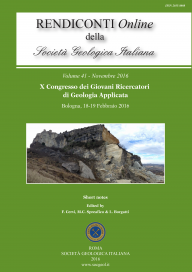
Surface water – groundwater connectivity implications on nitrate cycling assessed by means of hydrogeologic and isotopic techniques in the Alento river basin (Salerno, Italy): preliminary data
Luisa Stellato(a), Brunella Di Rienzo(a), Egidio Di Fusco(a), Mauro Rubino(a), Fabio Marzaioli(a), Vincenzo Allocca(b)
Antonio Salluzzo (c), Juri Rimauro(c), Nunzio Romano(d) & Fulvio Celico(e)
(a) Centre for Isotopic Research on Cultural and Environmental heritage (CIRCE), Dip. di Matematica e Fisica, Seconda Università degli Studi di Napoli, Viale Lincoln, 5, 81100 Caserta, Italy. E-mail: luisa.stellato@unina2.it
(b) Dipartimento di Scienze della Terra, dell'Ambiente e delle Risorse (DiSTAR), Università di Napoli Federico II,Via Mezzocannone, 8, 80134, Napoli, Italy.
(c) ENEA - Research Center of Portici, UTTP-CHIA, Environmental Chemistry Laboratory, Piazzale E. Fermi, 1, 80055 Portici (Napoli), Italy.
(d) Dept. of Agriculture, Division of Agricultural, Forest and Biosystems Engineering, Università di Napoli Federico II, Via Università, 100, 80055, Portici (Napoli), Italy.
(e) Interdisciplinary Centre for Studies on Water Resources, Department of Physics and Earth Sciences "Macedonio Melloni", University of Parma, Parco Area delle Scienze, 157/A, 43124, Parma, Italy.
Abstract
Keywords
Get Full Text